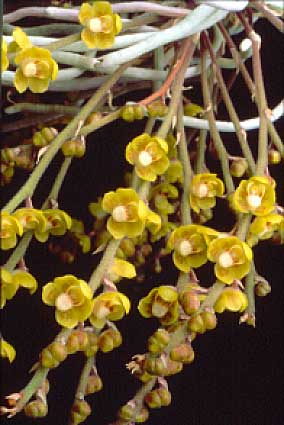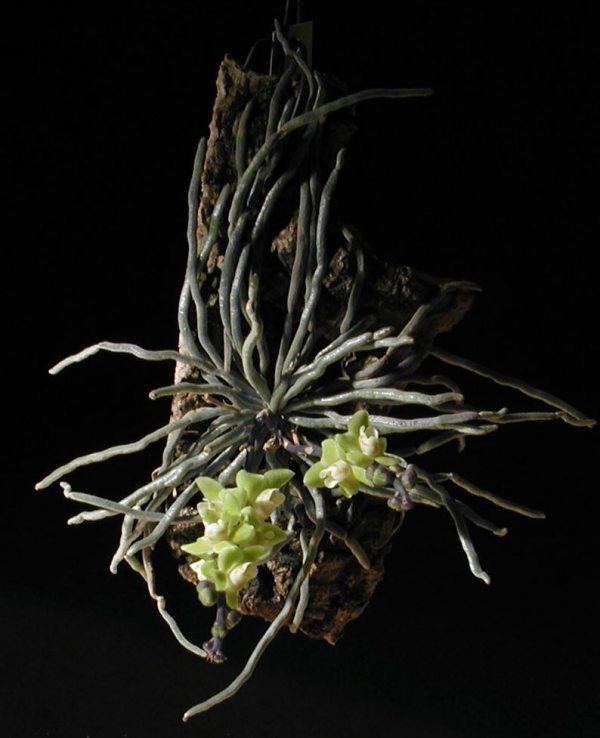Chiloschista
Are you looking for a unique and exotic orchid to add to your collection? Look no further than chiloschista! This stunning orchid species has a fascinating history and a unique set of care requirements that make it a challenge for even experienced orchid growers.
The Pain Points of Chiloschista
While chiloschista is a beautiful and rewarding plant to grow, there are certainly some challenges to keeping it healthy and thriving. One of the biggest pain points for growers is its specific care requirements, particularly when it comes to watering and humidity levels. Additionally, because this orchid is found in the wild in very specific geographic regions, it may be difficult to find a supplier with healthy plants available for purchase.
The Target of Chiloschista
Chiloschista is a member of the Orchidaceae family and is native to Southeast Asia, where it can be found growing in the wild in regions such as Myanmar, Thailand, and Vietnam. This orchid species can be grown both indoors and outdoors, and it typically blooms in shades of green, yellow, and white. While somewhat rare, chiloschista is becoming increasingly popular among orchid enthusiasts due to its unique appearance and interesting care requirements.
Summary of Main Points
So why should you consider adding chiloschista to your orchid collection? For starters, it's a unique and visually stunning plant with an interesting history and care requirements that will challenge even the most seasoned orchid growers. By following a few simple tips and tricks, however, anyone can successfully grow this amazing orchid. In this article, we'll go over everything you need to know about taking care of chiloschista, from its specific watering needs to the best ways to fertilize and repot it over time.
The Target of Chiloschista - A Personal Experience
I first discovered chiloschista while visiting a local orchid grower. I was immediately struck by its unique appearance - the orchid's tiny flowers have a delicate and intricate quality that is truly mesmerizing to behold. After doing some research, I decided to purchase a chiloschista plant of my own, even though I knew it might be a challenge to keep it healthy and thriving.
One of the most important things I learned about caring for chiloschista is that it requires high humidity levels in order to flourish. I keep my plant in a terrarium-style growing container, which helps to maintain the ideal level of moisture in the air. Additionally, I only water it when the soil is completely dry to the touch - any more frequently than that, and the roots may begin to rot.
If you're looking for an eye-catching and unique orchid to add to your collection, chiloschista is definitely one to consider. With a little bit of knowledge and TLC, it can thrive in even challenging growing conditions.
Chiloschista and Repotting - A Personal Experience
As my chiloschista plant began to grow and flourish, I knew it was time to consider repotting it. While I was initially intimidated by the thought of transplanting such a delicate orchid, I quickly realized that it was a fairly straightforward process.
First, I gently removed the plant from its old container, being careful not to damage the roots. I then trimmed away any dead or unhealthy roots, before placing the plant in a fresh pot with fresh soil. I made sure to pack the soil tightly around the roots to keep the plant stable, and then gave it a thorough watering to help it settle into its new home.
While repotting any orchid can be nerve-wracking, chiloschista is a relatively hardy species that will bounce back quickly with the right care and attention.
The Care and Feeding of Chiloschista
One of the most important things to keep in mind when caring for chiloschista is the need for high humidity levels. This orchid thrives in humid environments, so consider investing in a terrarium-style growing container or a humidifier to keep the air moist.
Additionally, chiloschista requires specific soil and watering conditions in order to stay healthy. The plant's soil should be well-aerated and drain easily, as overly wet soil can lead to root rot and other health issues. When watering the plant, wait until the soil is completely dry to the touch before giving it a thorough watering.
Finally, it's important to fertilize chiloschista regularly in order to ensure healthy growth and vibrant blooms. Use a balanced orchid fertilizer every month or so during the growing season, and be sure to avoid over-fertilizing, which can lead to salt buildup and other problems.
Pruning and Propagating Chiloschista
Regular pruning is an important part of caring for chiloschista, as it helps promote healthy growth and keeps the plant looking its best. To prune your plant, carefully trim away any dead or yellowing leaves or stems, being sure not to damage the healthy parts of the plant in the process.
When it comes to propagating chiloschista, there are a few different methods to choose from, including division, backbulb propagation, and stem cutting propagation. Which method you choose will depend on the size and health of your plant, as well as your personal preferences and experience as an orchid grower.
Question and Answer
Q: Can chiloschista be grown outside?
A: Yes, chiloschista can be grown outside in certain regions. However, it's important to keep in mind that it requires specific temperature and humidity conditions in order to thrive. Additionally, outdoor-grown chiloschista may be more susceptible to pests and diseases than those grown indoors.
Q: How often should I fertilize my chiloschista?
A: Chiloschista should be fertilized every 4-6 weeks during the growing season. Use a balanced orchid fertilizer and be sure not to over-fertilize, which can lead to salt buildup and other issues.
Q: How do I know when it's time to repot my chiloschista?
A: Signs that it may be time to repot your chiloschista include roots growing out of the bottom of the pot, yellowing leaves or slow growth, or a crowded or compacted root system.
Q: What is the ideal temperature range for chiloschista?
A: Chiloschista prefers daytime temperatures between 70-85°F and nighttime temperatures of around 60°F. Additionally, this orchid thrives in environments with high humidity levels, so be sure to place it in a location that can be kept moist.
Conclusion of Chiloschista
If you're an orchid enthusiast looking for a new and challenging species to add to your collection, chiloschista is definitely one to consider. With its unique appearance and interesting care requirements, this orchid is sure to captivate your attention and keep you on your toes as you work to provide it with the perfect growing conditions. By following a few simple tips and tricks, however, anyone can successfully grow and care for this stunning plant.
Gallery
Chiloschista
Photo Credit by: bing.com / chiloschista usneoides
Chiloschista

Photo Credit by: bing.com / aos orchids ccm greg allikas 2009
IOSPE PHOTOS
Photo Credit by: bing.com / chiloschista rodriguez ormerod william 2005
Travaldo's Blog: Chiloschista Pusilla Care And Culture

Photo Credit by: bing.com / pusilla culture care stefano nc sa cc
Chiloschista - Alchetron, The Free Social Encyclopedia

Photo Credit by: bing.com / chiloschista lunifera